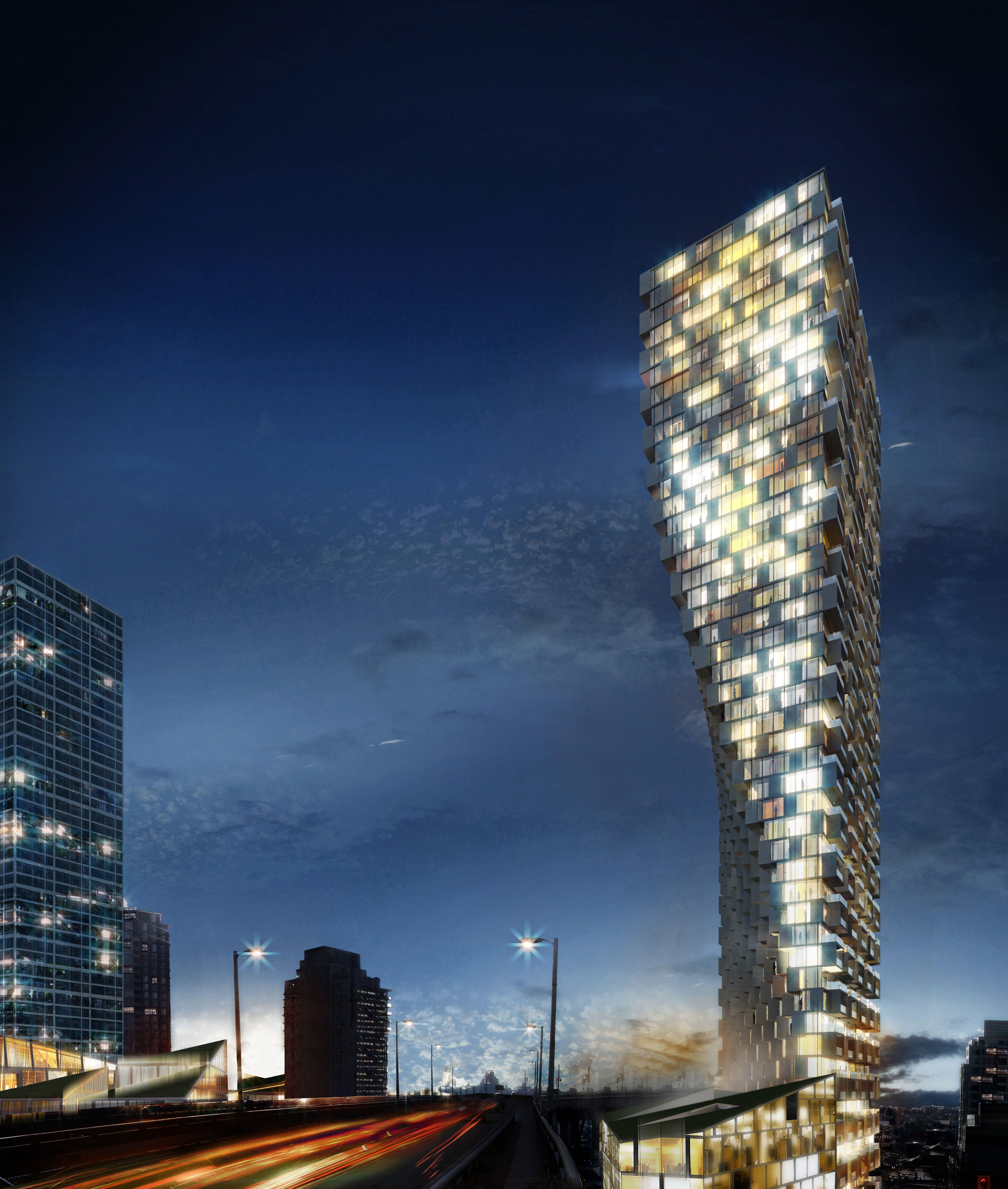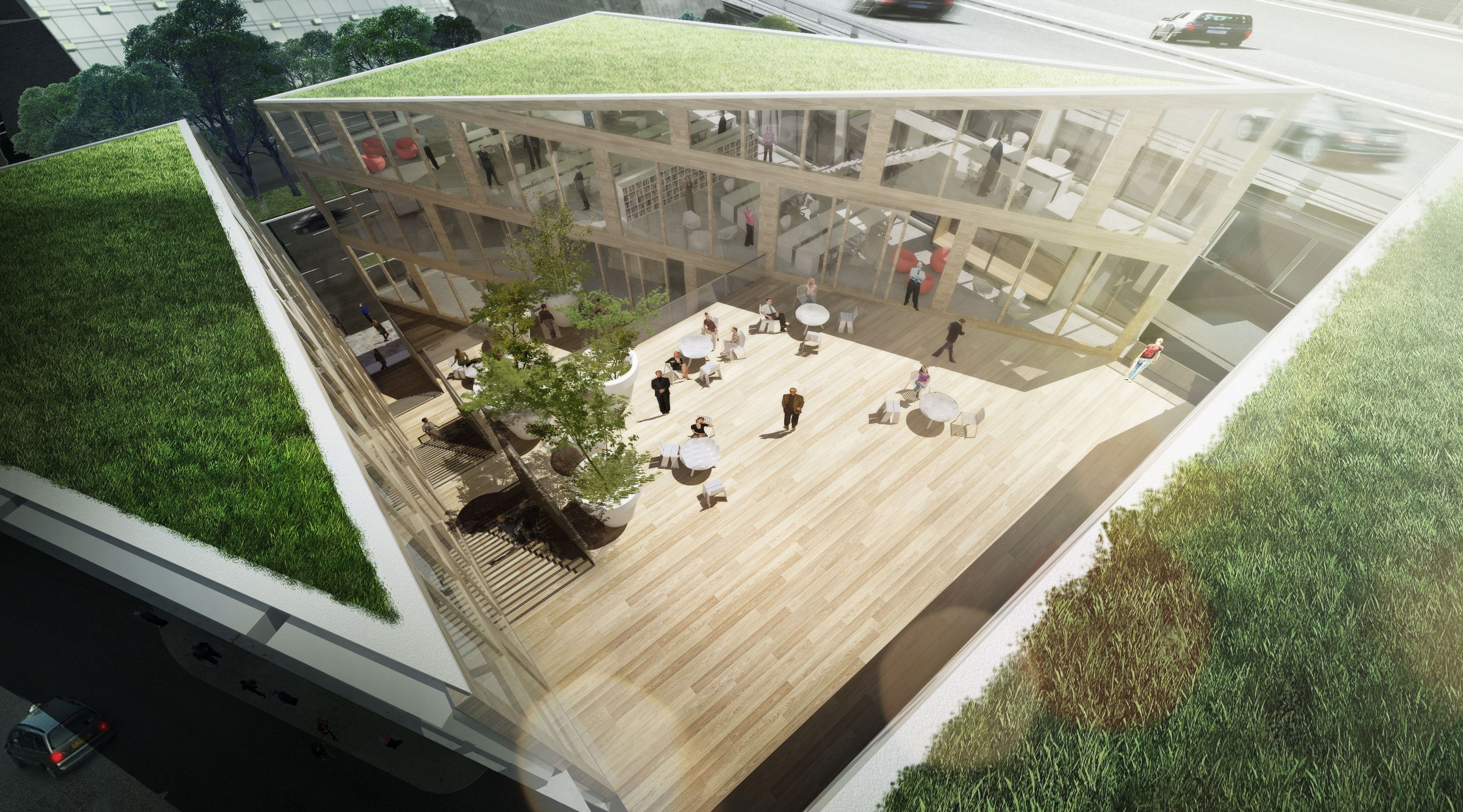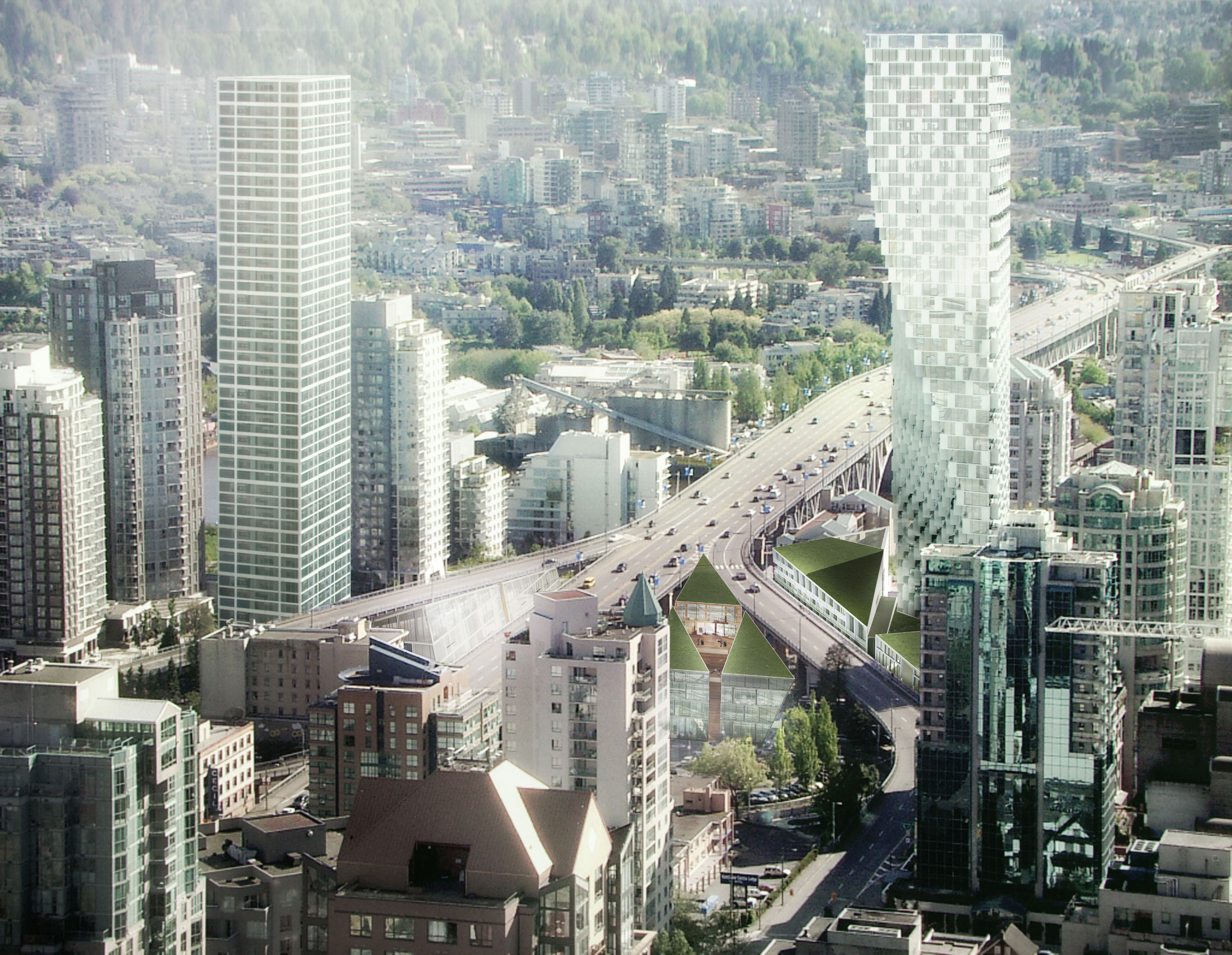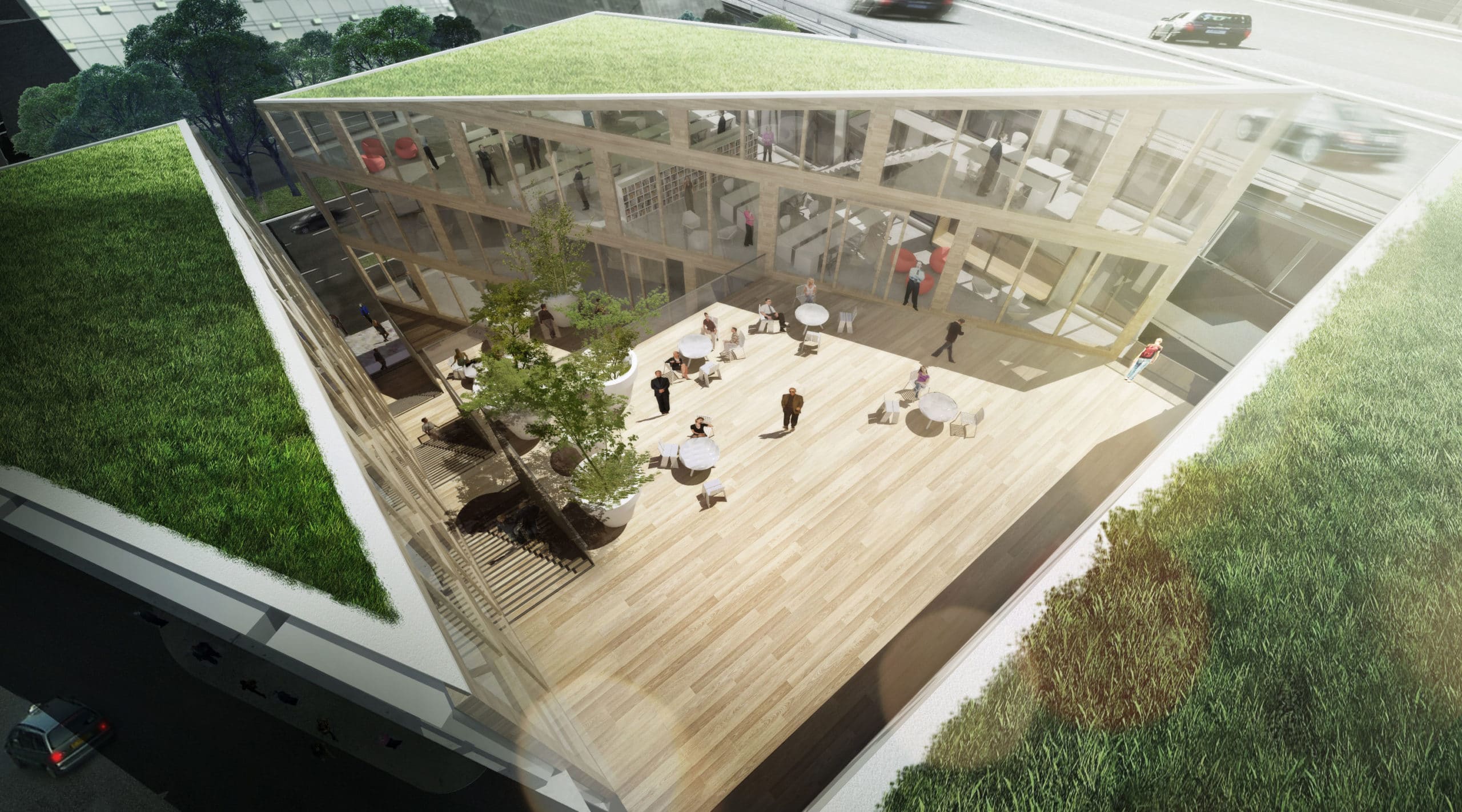
The Vancouver House project aims to reclaim a site beneath a busy city bridge. [Photo: Courtesy of Bjarke Ingels Group]
The otherworldly architecture of Vancouver House seems to defy gravity as it inspires architects worldwide.
PROJECT
LOCATION
Vancouver
SIZE
716,000 square feet
COMPLETION
2019
COST
$157 million CAD
AWARDS
Architizer A+ Awards Future Residential Finalist 2016
Canadian Architect Award of Excellence 2015
World Architecture Festival Future Project of the Year 2015
and more
TEAM
CLIENT
Westbank
ARCHITECT
Bjarke Ingels Group & Dialog
PARTNERS IN CHARGE
Bjarke Ingels, Thomas Christoffersen, Beat Schenk
PROJECT LEADER
Agustín Pérez-Torres
PROJECT MANAGER/ DESIGNER
Carl McDonald
Rising 52 stories in the sky, Vancouver House is not what it appears at first glance, though even that is quite impressive.
Yes, Bjarke Ingels Group’s Vancouver House will be one of the most technologically advanced high-rise residential buildings in the world when it is finished, and it’s expected to be one of the world’s first LEED Platinum-certified residential towers. But it also incorporates streets and pedestrian pathways in ways you’ve never seen.
“Vancouver has already embarked upon an urban experiment in creating a super dense residential downtown to increase pedestrian activity and street life,” says Thomas Christoffersen, BIG Partner. “With this project we attempt to continue this process of densification by reclaiming a site beneath the bridges that would otherwise be lost as a lifeless ‘black hole’ in the urban fabric.” Instead, this design allows for traffic above to create a new form of weather-protected urban space below.

[Photo: Courtesy of Bjarke Ingels Group]
Trisected by an overpass and burdened by setbacks, the tower will maximize its mass where it has the most impact. At its base, a nearly 100-foot setback from the highway gives it a triangular footprint on the ground. As the tower gets taller—and wider—it also clears the zone of noise and visual pollution. “It then exploits the opportunity to overcome the setback and reclaims the valuable area. In doing so, it provides an icon for the city’s skyline and a generous public space at its base,” Christoffersen says.
The podium is a mixed-use urban village, with spaces for working, shopping, and socializing that all look out onto public plazas and paths. The tower itself will be 80% residential, 10% offices, and 10% retail. “This is not just a building, but the start of a new neighborhood,” Christoffersen says, adding that the three buildings that make up Vancouver House, along with the Granville bridge, create an exciting area that can accommodate all kinds of events.

[Photo: Courtesy of Bjarke Ingels Group]
Rising to the Occasion
Vancouver House has already received many awards, from the Canadian Architect Award of Excellence 2015 to the World Architecture Festival Future Project of the Year, but step one in the project was finding the perfect location. The team sought a spot that encompassed smart growth principles while creating a dynamic sustainable hub in a residential community. And it had to be beautiful.
“We’ve designed this project with the mindset of ‘gesamtkunstwerk,’ a term that German opera composer Richard Wagner used to describe opera,” Christoffersen says. “It roughly translates to ‘a total work of art,’ referring to the act of combining all art forms into a single piece.” Adopting this philosophy, Vancouver House is designed from the smallest detail to the largest elevation.
But this also includes aiming for the epitome of “greenness,” with features like a passive envelope, triple glazing, deep balconies that shield units from harsh light, green roofs, and an extensive rainwater management system. Inside, Vancouver House will have highly efficient LED lighting, occupancy sensors, daylighting controls, and radiant ceiling heating and cooling in offices, among other sustainable attributes. Materials used during construction contain recycled and regional materials as well as those that promote a healthy indoor environment. More than 75% of materials will be kept out of the landfill.
In terms of energy and rainwater management, the Energy Use Intensities (EUI) have been set at 115kWh/m2 per year for the residential building and 121kWh/m2 per year for the office spaces at the podiums. Rainwater will be used for irrigation through a rainwater harvesting system for 100% of irrigation demands in addition to a 40% water reduction for potable use in all buildings. A water resource management plan is also being created for vegetated roofs and permeable spaces to reduce stormwater runoff.
Mechanical systems will use 100% fresh and UV-treated and carbon-filtered outdoor air with no recirculation. Similarly, all domestic water will pass through a reverse-osmosis filtration system, and residences will be served with a highly flexible and efficient top-end hydronic heating and cooling system.

[Photo: Courtesy of Bjarke Ingels Group]
A Living Sculpture
The building’s peculiar shape requires a unique structural system. Vancouver House will be the first project in the city to use vertical post-tensioning and a robust walking column system.
And rather than feel restricted in design by city regulations or obstacles like traffic, BIG uses those urban conditions to its advantage to create new opportunities.
“Vancouver House is a contemporary descendant of the Flatiron Building, one of New York City’s most iconic landmarks,” Christoffersen says, noting that its triangular site was considered unusable because of its shape until increased real estate prices and advanced technology in construction made it possible. “Similarly, Vancouver House’s form is a result of its circumstances: a trisected site, existing infrastructure, and concerns for neighboring buildings and parks. The sculptural silhouette is not the result of formal excess, but rather the consequence of design and real estate optimization; it appears different because it performs and responds differently.”

